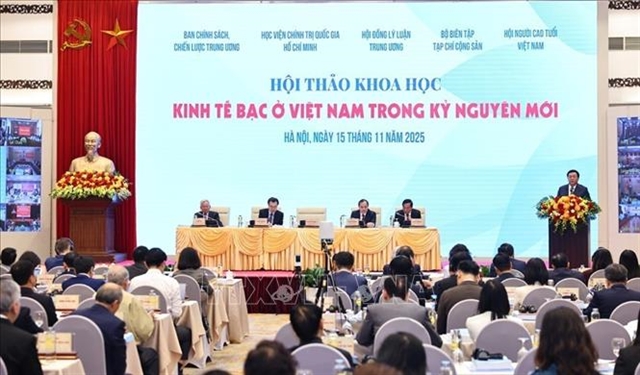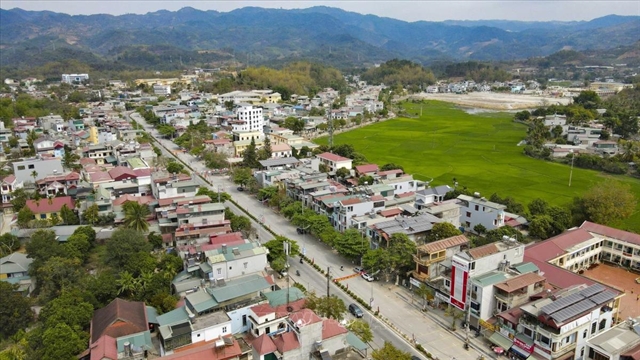 Society
Society

Prime Minister Nguyễn Xuân Phúc has launched a national movement to join hands to support the poor, targeting an annual average decrease of up to 1.5 per cent of the poor household rate in the 2016-2020 period in line with the multidimensional poverty line.
 |
| Prime Minister Nguyễn Xuân Phúc has launched a national movement to support the poor, targeting an annual average poverty rate decrease of up to 1.5 percent in the 2016-2020 period, in line with the multidimensional poverty line. — Photo VGP |
HÀ NỘI — Prime Minister Nguyễn Xuân Phúc has launched a national movement to support the poor, targeting an annual average poverty rate decrease of up to 1.5 percent in the 2016-2020 period, in line with the multidimensional poverty line.
Phúc kicked off the movement at an online conference in Hà Nội Saturday on the national target programme on sustainable poverty reduction. There, the PM and participants responded to a text-message campaign to raise funds for the poor and called for the entire society to join the campaign.
With each message of “VNN” sent to 1409 from October 15 to November 30, people can donate VNĐ15,000 to the fund. One person can donate unlimited messages.
Under the previous poverty line,the proportion of poor Vietnamese households in 2015 was 4.25 per cent, a sharp drop from 14.2 per cent in 2010. During the 2011-2015 period, the ratio declined an average of 2 percent each year and 6 percent in poor districts.
Meanwhile, the average per capita income of poor households increased 1.6 times over since 2011, and it rose 2.5 times for those in extremely impoverished areas.
Since 2011, nearly VNĐ47.34 trillion (US$2.1 billion) was poured into the national target programme for sustainable poverty reduction, which has helped improve the living conditions for the poor, as well as the infrastructure system in poor localities.
In the 2016-2020 period, the number of poor households is expected to drop an average of 1-1.5 per cent each year in accordance with the new poverty line.
The reduction is expected to reach 4 per cent per year in poor communes and districts and 3-4 per cent among families from ethnic minority groups.
Resources for the programme are nearly VNĐ48.4 trillion, the majority of which coming from the State budget.
UNDP Country Director in Vietnam Louise Chamberlain held that Việt Nam should allocate more resources in activities to improve capacity of the poor moving out of poverty.
The UNDP pledged to work closely with the Vietnamese Government to mobilise financial sources and seek creative and comprehensive solutions and connecting parties to support Việt Nam in fulfilling all 17 UN Sustainable Development Goals, she stated. Prime Minister Phúc affirmed that poverty reduction is among the top concerns of the Party and State.
Việt Nam’s achievements in this field have been recognised by the international community, he said, noting that the country’s poverty rate dropped from 58 per cent in 1993 to 4.45 per cent in 2015 on the old poverty line, equivalent to 9.92 per cent to the new line.
Although Việt Nam has finished the UN Millennium Development Goals, there are still over 1 billion poor people in the world, mostly in rural areas, he said.
However, he noted that the poverty rate of over 50 per cent is still seen in 41 districts nationwide, while income of people from ethnic minority groups is equal to only one sixth of the country’s average figure.
At the same time, some localities are still confused about the classification of poor households, he said.
He called for determination and solidarity across the entire society in implementing Party and National Assembly resolutions in poverty reduction and UN SGD fufillment.
The PM highlighted the need to strengthen communications in the field, as well as the need to improve people’s intellectual standards and develope industry and services, as well as build new-style rural areas with advanced technology to increase the livelihood.
He called for all families, enterprises, agencies and international organisations to uphold their social responsibilities and raise funds for the poor, promote assistance of poor localities, and help households escape poverty. — VNS




